Colorado, with its breathtaking towering mountains and fertile valleys, is a natural wonder and a treasure trove of American history, particularly evident in its historic forts.
These forts, ranging from military camps to trading posts, tell the stories of early pioneers, fur trappers, and the U.S. Army’s interactions with Native Americans.
In this article, Historic Forts in Colorado, we explore ten of the most significant forts in the Centennial State, each a chapter in the larger story of the American West.
10 Historic Forts in Colorado
| 1. Bent’s Old Fort National Historic Site | 6. Fort Massachusetts |
| 2. Fort Garland | 7. Fort Uncompahgre |
| 3. Fort Vasquez | 8. Fort Lyon |
| 4. Fort Lupton | 9. Fort Sedgwick |
| 5. Fort Morgan | 10. Fort Collins |
1. Bent’s Old Fort National Historic Site

Bent’s Old Fort National Historic Site in Otero County, southeastern Colorado, was established in 1833 by the visionary efforts of the Bent brothers, William and Charles, along with Ceran St. Vrain.
Positioned strategically along the Arkansas River, the fort marked a new era in the region’s history.
The fort rapidly evolved into a bustling trading post, primarily trading buffalo robes with the Southern Cheyenne and Arapaho Plains Indians.
Its location turned it into a cultural crossroads, facilitating a unique blend of interactions among Native American tribes, American settlers, and various travelers.
Strategic Importance Along the Santa Fe Trail
Its role extended beyond commerce, as Bent’s Fort became a crucial stop on the Santa Fe Trail.
Fort Davis was unique for its status as a major permanent settlement not under Native American or Mexican control. It welcomed explorers and the U.S. Army. Figures like Kit Carson and John C. Frémont often stopped at the fort, underlining its strategic significance.
The fort, constructed over four years starting in 1828, was an architectural marvel. Made of adobe, it was sizable and formidable, with thick walls and bastions equipped with cannons, reflecting the engineering ingenuity of the era.
Decline and Relocation
The fort’s prominence dwindled following a devastating cholera epidemic in 1849.
Responding to the changing times, William Bent moved his trading operations first to Fort Saint Vrain and then to present-day Lamar, Colorado. He continued his business at Bent’s New Fort, built in 1853.
Reconstruction and Historical Significance
1976, a faithful fort reconstruction was undertaken, rooted in extensive archaeological and historical research.
This reconstruction has transformed Bent’s Old Fort into a captivating window into the past, offering insights into the multifaceted history of the American West, from trade and cultural exchange to military and exploratory endeavors.
2. Fort Garland
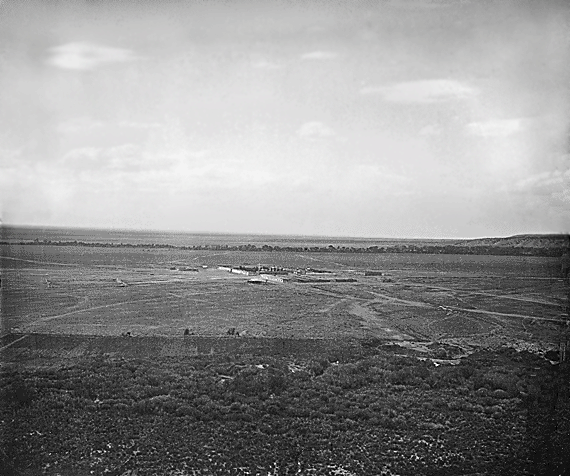
Fort Garland, nestled in the heart of the San Luis Valley in Colorado, boasts a rich history spanning several pivotal American history. Its story reflects the changing dynamics of the American West during the mid-19th century.
Fort Garland was established in June 1858, succeeding Fort Massachusetts, which had been established in June 1852 by Major George A. H. Blake to protect settlers in the San Luis Valley from hostile Ute and Jicarilla Apache Indians.
The new fort was named after General John Garland, commander of the Military District of New Mexico. It was constructed with an open plan and adobe buildings surrounding a central parade ground.
It housed quarters for officers, barracks for infantry and cavalry, and other essential facilities like administrative offices, a hospital, a commissary, and stables.
Fort Garland served as a recruitment and assembly center for volunteer troops during the Civil War. It became an enlistment center for Colorado volunteers loyal to the Union in early 1861.
These troops played a crucial role in the Battle of Glorieta Pass in 1862, a significant engagement often referred to as the “Gettysburg of the West.”
Kit Carson’s Leadership
One of the most notable periods in the fort’s history was when Colonel Christopher “Kit” Carson took command in 1866.
Carson, who had a distinguished career as a scout and soldier, played a pivotal role in maintaining peaceful relations with the local Ute Indians.
His leadership helped secure the trust and cooperation between the native population and settlers in the San Luis Valley.
Later Years and Decline
The fort’s importance waned in the later years of the 19th century. In 1879, it became a base of operations during a campaign against the Ute Indians after the Meeker Massacre.
The fort saw an influx of military activity, with the garrison swelling to fifteen companies of infantry and cavalry. However, by November 1883, Fort Garland was abandoned by the Army, marking the end of its active military use.
Preservation and Modern-Day Museum
Today, Fort Garland is maintained by the Colorado Historical Society as a museum. The museum preserves several original buildings, providing a glimpse into Army life on the western frontier.
Visitors can explore the adobe Commandant’s Quarters, where Kit Carson and his wife once lived, and view exhibits focusing on his life and the Buffalo Soldiers, among other aspects of frontier military life.
Fort Garland’s history encapsulates a significant era of American expansion and conflict. Serving as a critical post for military operations, and negotiations with Native American tribes.
It also symbolizes federal presence in the rapidly evolving American West.
3. Fort Vasquez
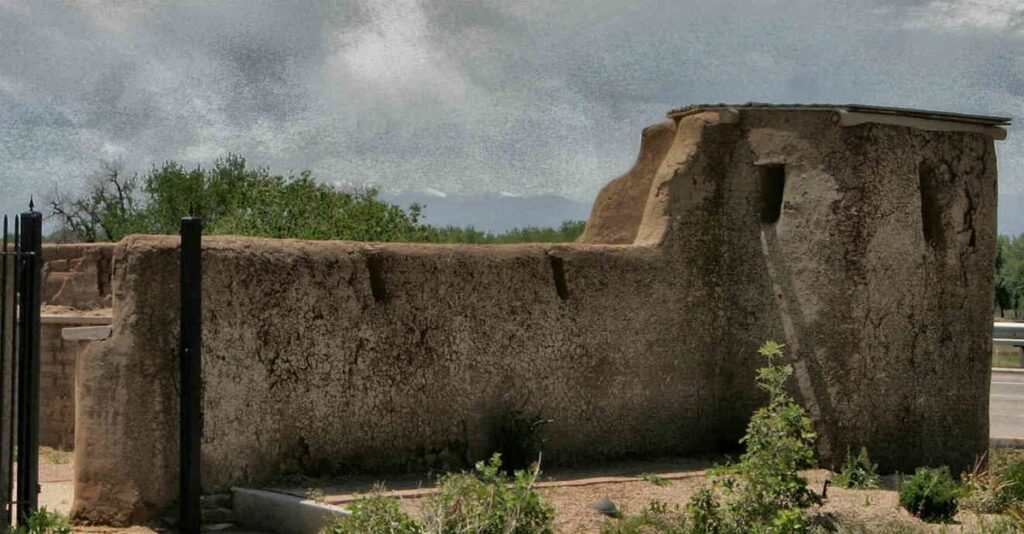
Fort Vasquez, a historic fur trading post in Colorado, plays a pivotal role in the narrative of the early 19th-century fur trade in the American West.
Named after the fur trader Louis Vasquez, it was established by Vasquez and Andrew Sublette in 1835, near present-day Denver.
Initially, Vasquez and Sublette built a temporary post called Fort Convenience on the South Platte River and Clear Creek in 1834.
After obtaining a trading license from William Clark, Superintendent of Indian Affairs in St. Louis, Missouri, they established Fort Vasquez the following year.
The fort engaged in trade with furriers, trappers, and Native American tribes, such as the Arapaho and Cheyenne, amidst stiff competition from other trading posts.
Economic Challenges and Decline
Despite initial success, Fort Vasquez faced financial struggles.
By 1840, unable to profit, Vasquez and Sublette sold the fort to the firm of Lock and Randolph. The firm later went bankrupt and abandoned the fort in 1842, leaving Vasquez and Sublette unable to recover their investment fully.
This marked the beginning of the fort’s decline, and by the 1930s, only its foundations and a few feet of the exterior walls remained.
Preservation and Museum
Facing near demolition during the construction of US Route 85, the fort was saved partially due to the efforts of local resident Fern Miller.
The Works Progress Administration restored it in the 1930s, and in 1958, the Colorado Historical Society (now History Colorado) took over the property and ran it as a museum.
Today’s museum offers a glimpse into the challenging lives of early explorers and traders, showcasing their economic hardships.
The replica of Fort Vasquez at its original site serves as a vital educational resource, providing insights into the rugged life of the fur trade era.
Visitors to the museum can learn about the history and stories of the people who were part of this critical period in the American West’s development.
Transformed from a bustling trading post to a museum, Fort Vasquez bridges the past and present, offering a unique perspective on the early economic endeavors and cultural exchanges that shaped the region.
4. Fort Lupton
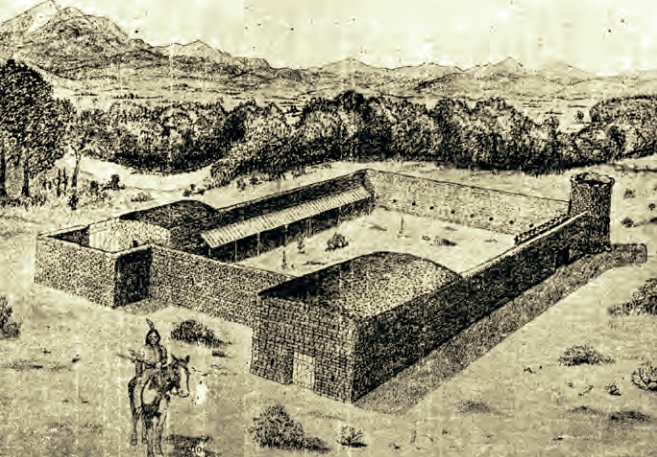
Fort Lupton, reconstructed on its original site in Colorado, is a historic symbol of the state’s role in the fur trade of the early 19th century.
Established by Lancaster Platt Lupton, a West Point graduate and former lieutenant in the United States Regiment of Dragoons. This fort also served as a crucial point for fur trappers and early pioneers navigating the challenges of the American frontier.
In New York, Lancaster Platt Lupton, born on September 21, 1807, envisioned the potential for a trading post during an expedition with Colonel Henry Dodge in 1835.
Seeing the prospects along the South Platte Valley in what would later become Colorado, Lupton resigned his military commission and returned the following year to establish Fort Lancaster, later known as Fort Lupton.
Construction of the fort began in 1836 with the financial assistance of Hiram Rich, a trader from Liberty, Missouri. Lupton selected a site along the South Platte River, about seven miles south of Fort Vasquez.
Design and Trading Operations
Initially a modest log shelter, the fort soon expanded into a large two-story adobe structure, modeled after Bent’s Fort. It measured approximately 125 feet by 150 feet, with walls towering 15-18 feet high.
The fort featured a circular tower for defense and various facilities, including living quarters, a kitchen, a blacksmith area, and storage rooms.
By 1837, Fort Lupton was actively trading with the Arapaho and Cheyenne tribes. It became a significant player in the fur trade along the Trapper’s Trail, linking Fort Laramie, Wyoming, to the Arkansas River and the Taos Trail to New Mexico.
Challenges and Closure
Despite attempts to make the trading self-sufficient, the fur trade began to wane by the early 1840s.
Fort Lupton faced bankruptcy in 1842, leading to its eventual closure and Lupton’s departure with his family to Hardscrabble, Colorado, in 1844.
The fort fell into disrepair and was used for various purposes, including as an overland stage station during the Colorado Gold Rush and as a temporary U.S. Army detachment camp during the Civil War.
Reconstruction and Legacy
In 2003, the South Platte Valley Historical Society began reconstructing Fort Lupton using some of the original adobe bricks and part of an original wall.
The reconstructed fort, opened in 2011, is now part of the South Platte Valley Historical Park.
It includes living quarters, trade rooms, blacksmith and carpenter shops, a tavern room, and a storage room with historical artifacts, offering insights into the life and challenges faced by fur trappers and early pioneers in the region.
Fort Lupton’s story, from its establishment to its reconstruction, encapsulates the spirit of resilience and adaptability that characterized the early American West.
It is a valuable educational resource, preserving the history of Colorado’s fur trade and the pioneers who braved the unforgiving frontier.
5. Fort Morgan
Fort Morgan, initially known as Camp Rankin and later renamed in honor of Colonel Christopher A. Morgan, was a pivotal military post during the Indian Wars in the 19th century.
Situated in the fertile valley of the South Platte River in Colorado, its history is closely tied to the protection of settlers and mail services along the Overland Trail.
Fort Morgan was established in 1864 to protect the mail service and immigrants traveling along the Overland Trail. The site on a plateau called “Morgan Flats” near the South Platte River was chosen for its strategic vantage point over the entire river valley.
Colorado Volunteers, under General Sam Brown, led the fort’s initial construction, and it was first named Camp Tyler.
The heavier construction work was later completed by “Galvanized Yankees,” Confederate soldiers who were released from prison on the condition that they joined the Union army to fight against Native Americans.
The post was then called Camp Wardwell.
Military Significance
Fort Morgan’s establishment was a direct response to the Cheyenne and Arapaho raids in the area, primarily driven by white settlers encroaching upon their hunting grounds and in retaliation for the Sand Creek Massacre.
The fort’s presence deterred these raids and protected travelers on the “Fort Morgan Cut Off” of the Overland Trail.
The fort was manned by a detachment of Federal soldiers from the Missouri Cavalry under Lieutenant Colonel Willard Smith.
Renaming and Operation
In 1866, the fort was christened “Fort Morgan” in honor of Colonel Christopher A. Morgan, the commanding officer of the 1st Regiment Illinois Volunteer Cavalry, who died in the same year.
The fort was approximately the size of a city block and included around 20 sod and adobe buildings surrounding a parade ground.
It was staffed with up to 1,200 soldiers and represented the only army between Julesburg, Colorado, to the east and the populated regions of the Rocky Mountains to the west.
Decommission and Legacy
By 1868, the Union Pacific Railroad had completed its line from North Platte, Nebraska, to Cheyenne, Wyoming, significantly reducing Indian raids.
Consequently, the troops were moved to Fort Laramie, Wyoming, and Fort Morgan was decommissioned. The buildings were sold at auction.
Today, a historical marker in a city park commemorates the fort’s history, and the Colorado Historical Society preserves its rich military heritage.
Fort Morgan’s role in the Indian Wars and its subsequent evolution into part of Colorado’s cities underscore its significance in the region’s history, marking a period of conflict, settlement, and eventual peace.
6. Fort Massachusetts
Fort Massachusetts, established in 1852 and abandoned in 1858, was the first regularly garrisoned government installation in what would soon become the Colorado Territory.
However, the area was part of the New Mexico Territory at its construction and occupation.
Situated on the west bank of Ute Creek at the base of Mount Blanca in the San Luis Valley, Fort Massachusetts played a vital role in the early history of Colorado.
The United States War Department commissioned the fort in June 1852 under the command of Major George A.H. Blake of the United States First Dragoons.
It was built to maintain control of the valley, protect white settlers and Ute Indians from each other, and serve as a headquarters for Indian Agents.
The fortification also represented the U.S. presence in the area following the Treaty of Guadalupe Hidalgo.
Constructed primarily out of wood in a quadrangular shape, the fort was fortified with a wooden palisade wall.
Two companies, Company F, 1st Dragoon, and Company H, 3rd United States Infantry, were garrisoned at the fort, housing 93 men within its walls.
Role in Conflict and Protection
Despite a peace treaty signed by the Ute Indians in 1849, escalating conflicts arose as more settlers moved into the area, leading to depletion of resources and tensions with the Native population.
Fort Massachusetts’ troops were tasked with stopping raids by the Ute Indians and providing protection for settlers and villages.
The Fort Pueblo Massacre in 1854, where a group of Indians attacked a trading post in present-day Pueblo, Colorado, highlighted the growing conflicts.
Following this, Fort Massachusetts received additional troops from Fort Union, New Mexico, to subdue the Ute Indians, who were eventually forced to cede their lands in the San Luis Valley.
Abandonment and Legacy
In 1858, due to the unsuitable swampy location of Fort Massachusetts, a new fort, Fort Garland, was constructed six miles to the south.
The troops were moved to this new location, leading to the abandonment of Fort Massachusetts. The site of Fort Massachusetts no longer stands and is located on private land not open to the public.
However, its legacy and a fort model can be found at the Fort Garland Museum in Fort Garland, Colorado.
7. Fort Uncompahgre
Fort Uncompahgre, located near the present-day city of Delta, Colorado, was a significant fur trading post in the early 19th century.
Established in 1828 by the trader Antoine Robidoux, this fort played an essential role in the fur trade and interactions between various regional cultural groups.
Antoine Robidoux, an influential trader from Santa Fe, New Mexico, founded Fort Uncompahgre. The post initially served as a trading hub, situated about two miles from the Gunnison and Uncompahgre Rivers confluence.
Its primary purpose was to secure goods and livestock rather than serve as a defensive structure.
Robidoux established several trails to supply the fort, including the Mountain Branch of the Old Spanish Trail and Robidoux’s Cutoff, which left the Santa Fe Trail near Bent’s Fort.
Trading Activities and Design
The trading post was likely composed of a few log buildings surrounded by a fence of cottonwood pickets and employed between 15 and 18 Mexican traders.
For many years, it was a remote but successful operation, trading with Ute tribe members and other local groups. The fort’s design focused more on the security of goods and livestock, reflecting the needs of the fur trade at the time.
Conflict and Abandonment
However, the peaceful operations of the fort were disrupted in the summer of 1843 due to hostilities between the Ute tribe and Mexicans in the Santa Fe area.
In September 1844, the conflict escalated, resulting in the deaths of all Mexican traders at the fort, except for one at the hands of Ute Indians.
This tragic event led to the fort’s abandonment by Robidoux, and a few years later, Ute warriors burned it down.
Reconstruction and Present-Day Museum
In 1989-1990, a group led by local historian William Bailey reconstructed Fort Uncompahgre at its current location.
Although not on the original site, this reconstructed fort provides a living history museum experience, offering insights into the life of a fur trading post in the 1820s and 1830s.
The Fort Uncompahgre History Museum, with interpreters dressed in period attire, recreates the frontier life in a trading post, providing a window into this historical period for modern visitors.
8. Fort Lyon
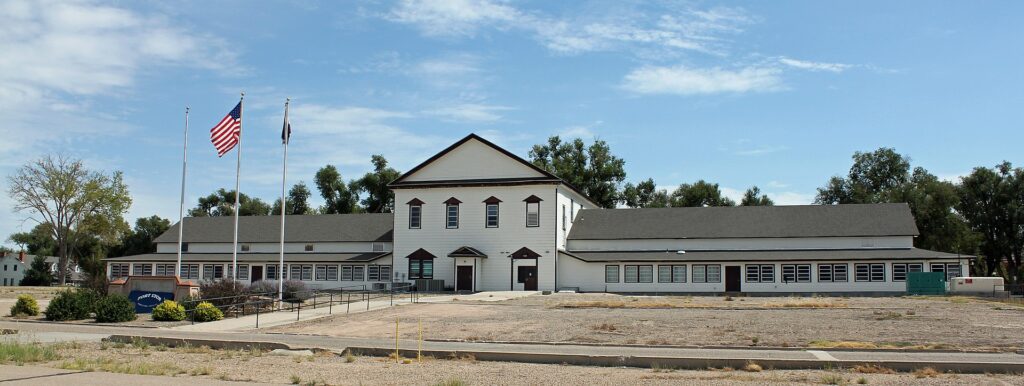
Fort Lyon, initially known as Fort Wise, began its journey in 1860. Situated near Bent’s New Fort, it was a strategic location for the U.S. Army to store annuity goods for the Cheyenne and Arapaho tribes.
1862, it was renamed Fort Lyon, marking a new phase in its history. During the tumultuous period of the Indian Wars, Fort Lyon was a pivotal site, notably playing a significant role in the Sand Creek Massacre in 1864.
Its military significance continued until 1897, despite being relocated after a devastating flood in 1866 to a site near Las Animas.
Transition to Medical and Correctional Use
The early 20th century brought Fort Lyon a new role. In 1906, the U.S. Navy, recognizing the need for specialized medical facilities, established a sanatorium for sailors and Marines with tuberculosis.
This facility evolved under the management of the Veterans Administration, eventually becoming a neuropsychiatry center by 1930, reflecting the changing medical needs and understanding of the era.
However, the hospital had closed by 2001, leading to the site’s reinvention as a minimum-security prison. This prison operated for a decade, closing in 2011.
Current Role in Rehabilitation and Transitional Housing
Governor John Hickenlooper initiated another significant transformation of Fort Lyon in 2013.
Under his direction, the site was repurposed as a transitional housing facility, focusing on the rehabilitation of homeless individuals battling substance abuse issues.
Managed by the Colorado Coalition for the Homeless, this facility provides shelter and comprehensive support services to facilitate its residents’ recovery and reintegration into society.
This innovative approach has positioned Fort Lyon as a beacon of hope and renewal, continuing to serve the community’s evolving needs.
9. Fort Sedgwick
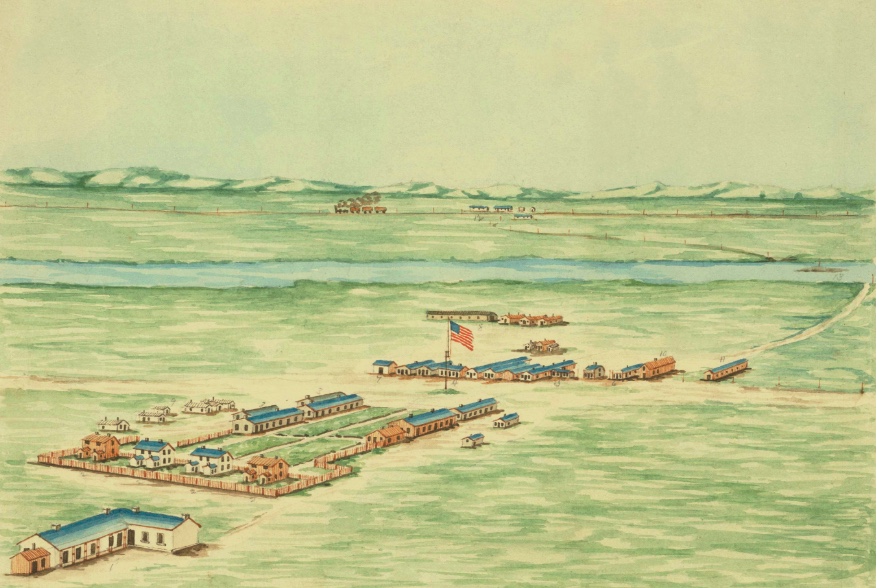
Fort Sedgwick, often referred to as “Julesburg” due to its proximity to the present-day town of Julesburg, stands as a significant chapter in the military history of the state of Colorado.
This fort, strategically positioned near the confluence of the South Platte River and Walnut Creek, played a pivotal role during the Indian Wars, a time marked by bloody wars and the relentless expansion of the United States.
The Role in Indian Wars and Manifest Destiny
During the Indian Wars, Fort Sedgwick served as one of the crucial military outposts on the plains, facing the reality of desperate times and the threat of hostile enemies.
It was a time when the concept of manifest destiny was at its peak, pushing American settlers into the heart of Native American territories.
Fort Sedgwick symbolized this expansion, a testament to the determination and struggles involved in the United States’ westward expansion.
Fort life at Sedgwick was challenging, with soldiers and inhabitants facing brutal weather conditions and the constant threat of American Indian attacks.
The fort functioned as a miniature citadel, complete with barracks, parade grounds, and a post office, serving as a military camp and a community for its residents.
Historical Significance and Preservation
Fort Sedgwick’s significance extends beyond its role in the Indian Wars. It reflects the broader narrative of American history, particularly Colorado’s role in the nineteenth century.
The fort’s location on the North Bank of the Colorado River positioned it on the frontline of the ragged edge of civilization, where U.S. Army troops, fur trappers, and early explorers converged, each playing their part in the unfolding story of the American West.
Today, while the original adobe buildings of Fort Sedgwick no longer stand, their historical impact remains preserved through the efforts of the Colorado Historical Society and local historic preservation groups.
Its story is a crucial part of the larger tapestry of historic forts in Colorado, each fort contributing unique tales of military camps, economic depressions, and the lives of those on the front lines of America’s expansion.
10. Fort Collins

Fort Collins, now a bustling modern city in Colorado, has roots that trace back to the 1860s as a military fort.
Originally established as a military outpost, Fort Collins was pivotal in the Indian Wars and the history of the American West.
In the 1860s, at the height of the Indian Wars, the U.S. Army established Fort Collins as a military post to protect the mail routes and American settlers from potential Native American attacks.
This establishment was a part of the more significant effort by the U.S. government to exert control over the region. Also, to safeguard the interests of the burgeoning number of American settlers venturing westward, following the ideals of manifest destiny.
Life and Community at Fort Collins
Life at Fort Collins during its military era was characterized by the typical rigors and challenges of frontier life.
Soldiers stationed at the fort, along with their families and other inhabitants, faced harsh conditions, from brutal weather to the constant threat of conflict.
Despite these challenges, Fort Collins flourished as a community with parade grounds, barracks, and essential services like a post office.
Transition to a Modern City
After its role in the Indian Wars diminished, Fort Collins gradually transitioned from a military fort into a civilian settlement.
This transformation marked the beginning of Fort Collins as one of Colorado’s cities, eventually growing into the vibrant and culturally rich city, it is today.
The city’s evolution from a military post on the frontier to a modern urban center is a testament to the dynamic nature of American history and the spirit of adaptation and growth.
Historical Legacy and Preservation
The historical legacy of Fort Collins as a military fort is preserved through various efforts by local historical societies and the Colorado Historical Society.
While the fort’s original structures no longer exist, the city’s rich history is commemorated through museums, historical markers, and educational programs highlighting its past as a military outpost.
Related: Exploring The Historic Forts of Hawaii
Conclusion – Historic Forts in Colorado
The historic forts of Colorado are not just relics of the past; they are living monuments rich with stories and lessons that resonate with us today.
They remind us of where we have been and hint at where we are going, holding a special place in Colorado and the annals of American history.
Thanks for reading, and if you have visited any of these forts, we would love to hear about your experience in the comments section below.

Cory is a website owner and content creator who enjoys fishing, history, coin collecting, and sports, among other hobbies. He is a husband and father of four.
Romans 15:4 For whatever was written in former days was written for our instruction, that through endurance and through the encouragement of the Scriptures we might have hope.

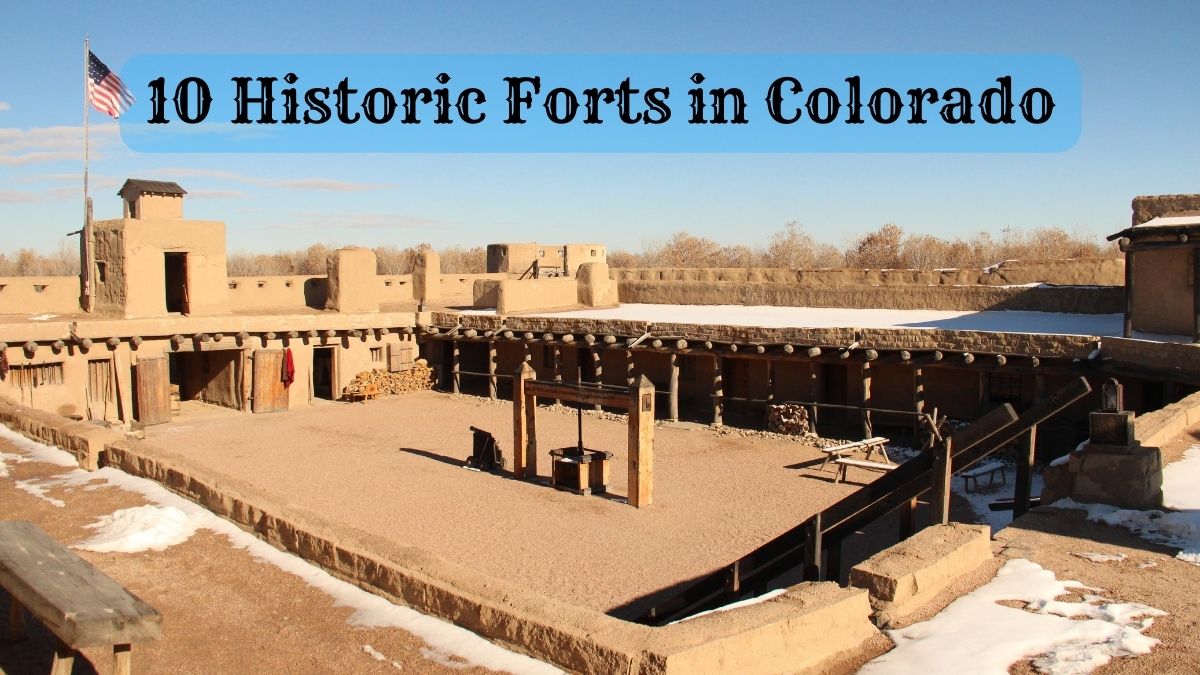
I found your website and am thrilled with the information you have compiled. I too have been compiling a list of Historic Forts in my home State of Colorado and in some of the surrounding States. Your site has been a wonderful resource for me. I have been to most of these Historic Forts including Fort Sedgwick. Sadly, all that remains of the fort is a flag pole in the midst of a farmers field. On the day I visited, a US flag was gloriously waving in the breeze. I could only imagine how the flagpole had once been surrounded the frontier fort. As I understand it, the flag pole stood in the middle of parade grounds on the fort. However, upon reading your description of Fort Sedgwick I did note one small discrepancy. In the final few paragraphs you stated that the fort stood on the North Bank of the Colorado River. I’m sure it was a simple oversight since the Colorado River flows West of the Continental Divide and not onto the Eastern plains of Colorado.
Anyway, thanks for your hard work. I’m sure it’s been a labor of love. Kind regards.
Hi Michael, thank you for the kind words. I really enjoy exploring the history of these forts and what has become of them. Thank you for pointing out the discrepancy. I will look into it.